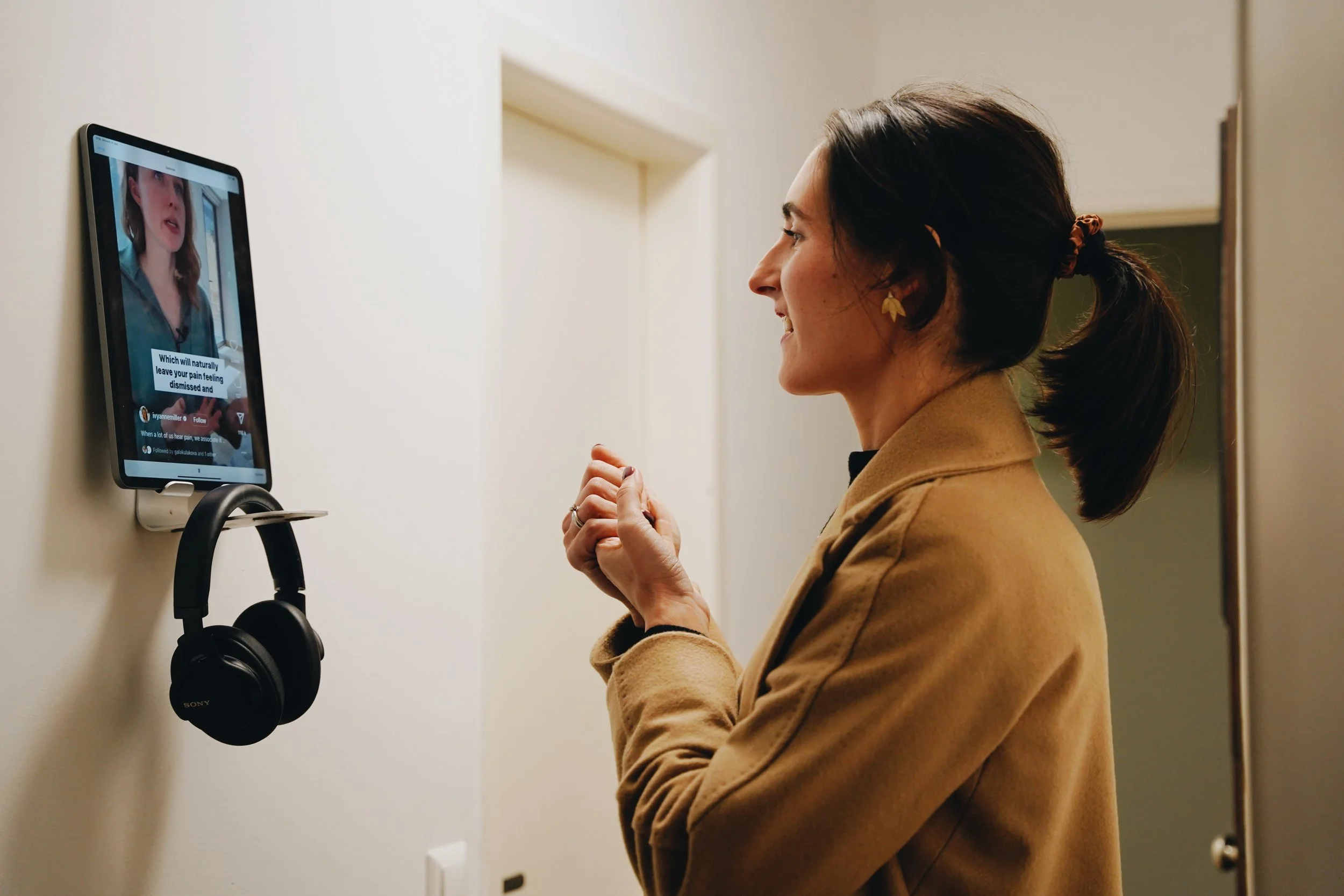Trauma Bondage
“something slightly separated from reality, yet familiar enough”
In Trauma Bondage, the first exhibition at Vienna Collectors Club’s new space at Hochhaus Herrengasse, the artist and photographer Kristina Kulakova addresses Trauma as a distorting force, ensnaring one’s perception, weaving an illusion that keeps humans tethered to the familiar yet painful. An artistic exploration on this topic, delves into the delicate visual interplay between contrasts of sharp and soft, natural and synthetic, solid and airy – Questions on what serves to bind those visual heterogeneities are placed into the exhibition space and undergo a deep reflection in the artist’s process.
Kristina Kulakova explores not only her own experience with trauma and trauma bonds, but also the overall feeling of a traumatized society, where trust is eroded, and relationships are labeled as unsafe – emerging narratives in which suffering becomes the currency for love and connection. Trauma bonds – woven from elements of intensity, duration, conditioning, and mental constructs – are being addressed within photographic still lives and two video installations.
Entering the exhibition space, one encounters seven photographic prints resembling still-life compositions, each portraying transient sculptures consisting of balloons carefully positioned between lava stones, quail eggshells, dried tulips, and interconnected by strings and leather cords. Through both the material choices and the deliberate arrangement of these elements, artistically addressing the Japanese art of bondage Shibari, Kristina Kulakova astutely alludes to the intricate and ambivalent nature of trauma bonds. Her photographic still lives allude to the essence of studio pieces and create a vivid spatial impact. Photography is seen here as a means for exploring the duality of nature and our surroundings.
In addition to the works Trauma Bondage | East and Trauma Bondage | West, landscape wallpapers showing an untouched land consisting of lava debris, are installed in the exhibition space to reestablish a connection with the primordial. Kulakova intricately weaves together the four elements – water, earth, air, and fire – uniting them into a cohesive whole within the confines of her artistic studio process, addressing again the interplay of nature and society.
The video installation Pain that I’m used to comprises a film depicting a calm countryside lake and a chair adorned with nails. Serving as a representation of trauma's intricate dynamics, Kulakova alludes to the profound challenge of nurturing and savoring relationships in the shadow of traumatic experiences. Seated upon these nails, one perpetually maintains a state of tension and heightened vigilance, with the cacophonous echoes of past events resounding ceaselessly, inhibiting the capacity to fully embrace the present and, esoterically speaking, to be immersed in the moment.
Instant Therapy, showcasing screen recordings of so-called "therapy sessions," inundating our Instagram reel chronicle, are presented on an iPad next to the entrance. Does watching Reels like that really help, though? The omnipresent Instagram algorithms, a phenomenon seemingly ingrained within our daily lives, play a pivotal role. They guide the curation of our viewing experience on Instagram, actively crafting and shaping the distinctive trajectory of our highly
individualistic social media journey. The algorithm is what we choose the algorithm to be – a blessing and curse at the same time.
With Trauma Bondage, Kulakova once again seeks to unearth an alternate path to balance, freedom, and peace in life, but this time she brings a deeply personal and intimate subject into the studio with an intensity unlike ever before. In her artistic process, the artist always draws from personal experiences, infusing her emotions and feelings into the studio, where they take form and find space for contemplation and understanding. She perceives life as a delicate dance around adversity, where the potential for positive transformation endures. A multi-dimensional narrative emerges, blending still-life compositions and video installations, inviting the viewers to contemplate the ambivalent dualities of trauma – from the fragility to the strength that lies within it.
Text by Livia Klein













